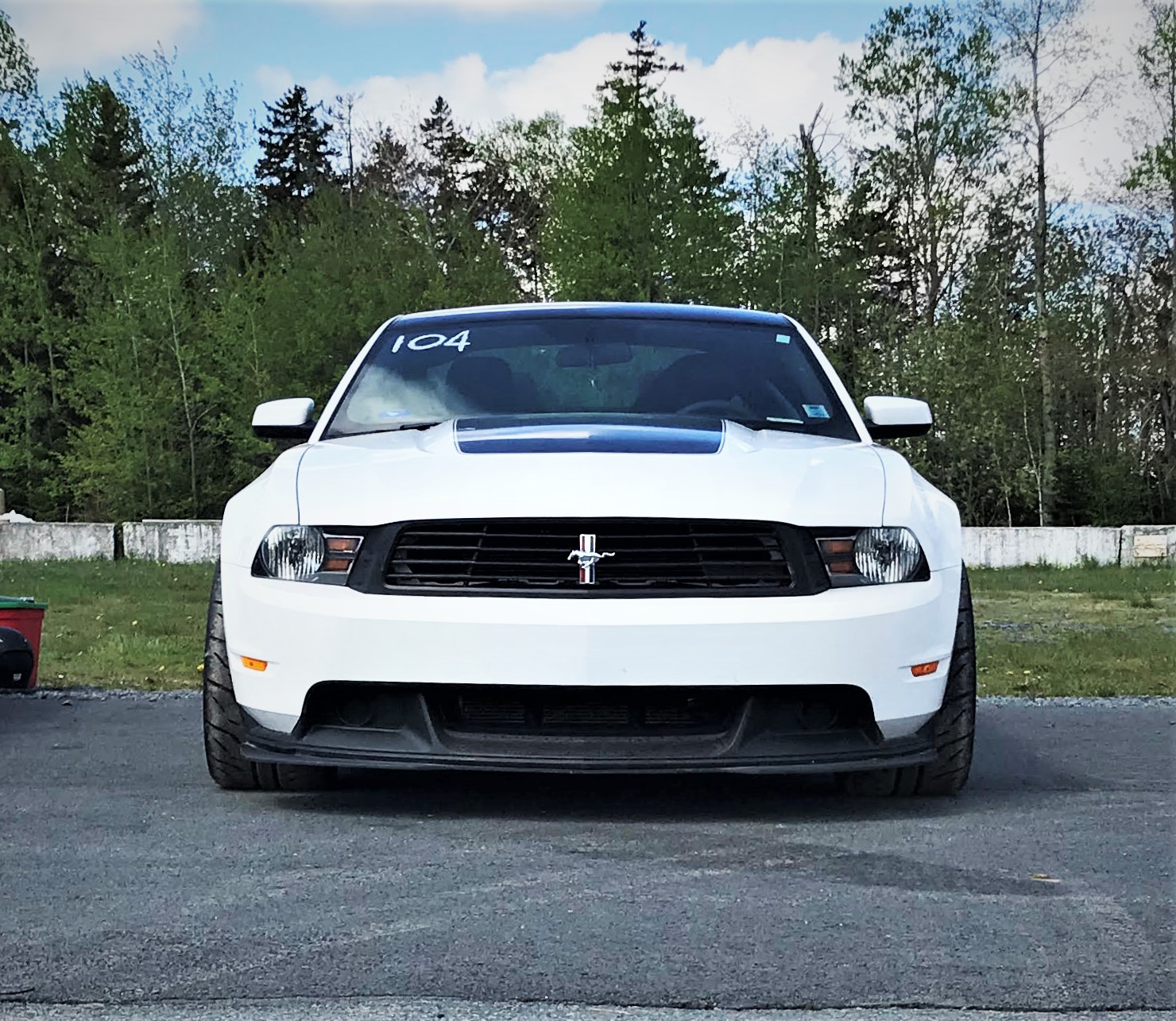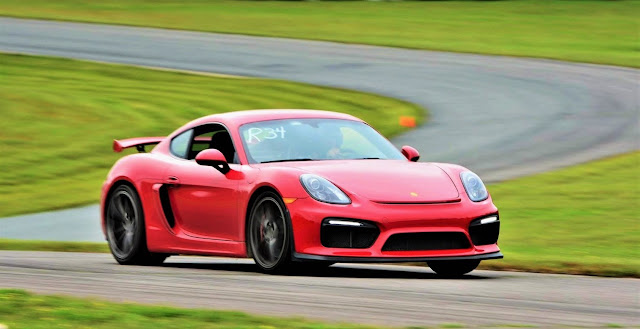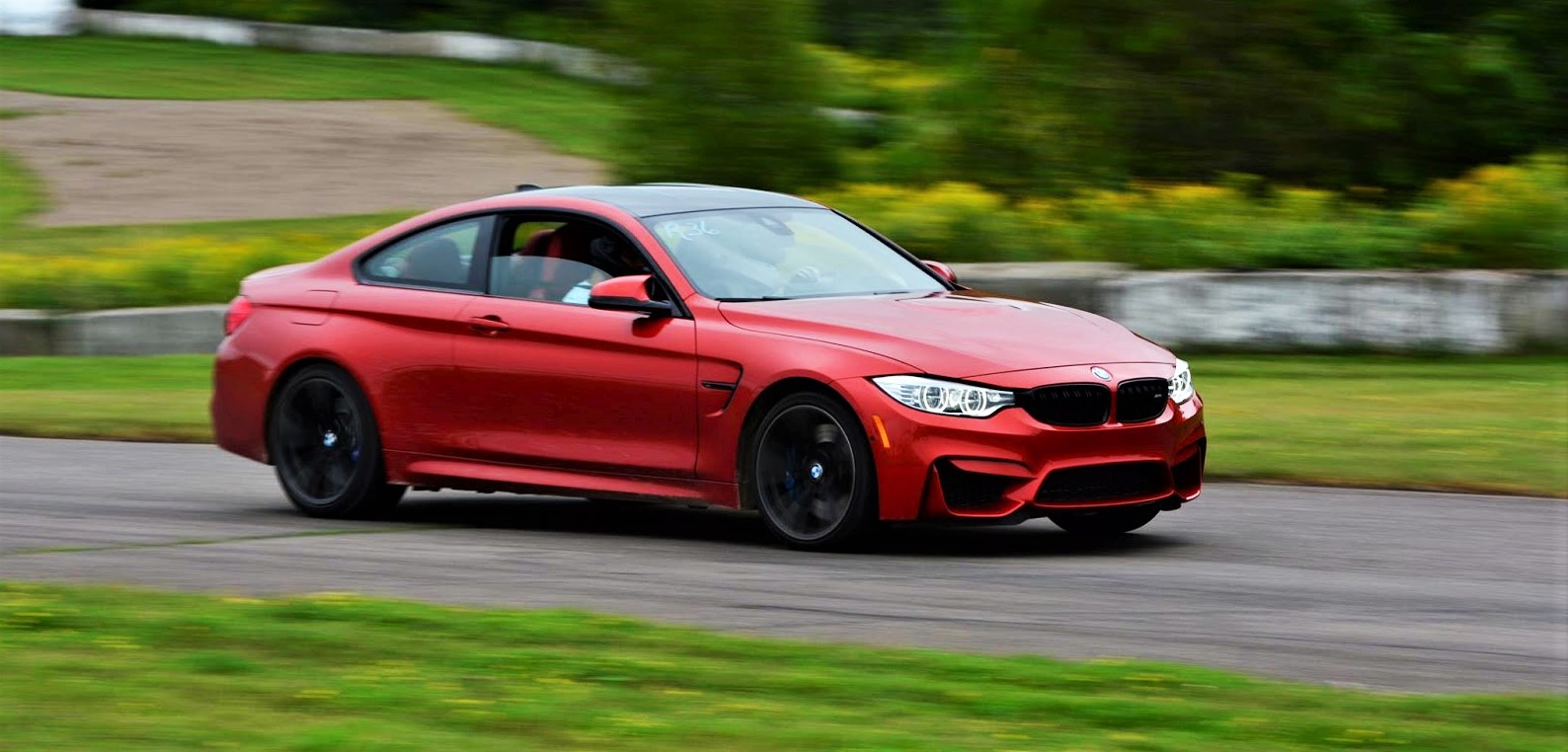A few days ago, I made a post about about Motor Trend's test of the Audi S8. It does a 0-60 mph sprint in 3.5 seconds and goes through the 1/4 mile in 11.8 @ 118.3 mph.. very impressive numbers. Even more so when you look at a couple other cars:
2012 Porsche Panamera Turbo S
0-60 mph: 3.5 s
1/4 mile: 11.8 s @ 118.0 mph
Power: 550 hp
Torque: 553 lb-ft
Weight: 4,388 lb
2012 Audi R8 GT
0-60 mph: 3.5 s
1/4 mile: 11.5 s @ 125.1 mph
Power: 560 hp
Torque: 398 lb-ft
Weight: 3,484 lb
Now let's compare those to the Audi S8
0-60 mph: 3.5 s
1/4 mile: 11.8 @ 118.3 mph
Power 520 hp
Torque: 481 lb-ft
Weight: 4,619 lb
The Panamera and R8 have weight to power ratios of 7.98 lb/hp and 6.22 lb/hp. The S8? Well, that one has a weight to power ratio of 8.88 lb/hp... The identical 0-60 time of the R8 GT and S8 can somewhat be explained by their engines' way of induction. Since the R8 is NA, the torque curve probably isn't as meaty so even though it weighs a lot less and has a higher weight to torque ratio, the torque curve is probably more peaky and the Audi S8 has a lot more torque off the line. The 1/4 mile reflects the additional power and superior weight to power ratio compared to the S8
But what about the Porsche? It has more power, a lot more torque, it has the same method of induction and it is significantly lighter (231 lbs). How could the Audi match its numbers? I immediately thought of 3 possibilities: someone spent a lot of time on gearing to get the numbers that low for bragging rights, the car is hugely underrated (again, for bragging rights) or a combination of both. A few days ago, I was hoping someone would dyno the S8 which could tell part of the story.
Luckily, Motor Trend did just that. In fact, they dyno'ed two cars on the same day which is even better for comparison. I know dynos are mainly tuning tools and not measuring tools because there are so many parameters that could change - both external and inherent to the dyno - that could alter the results. It can provide some insight though in this case, especially when you have two different cars dyno'ed back to back.
The two cars are the car in the question - the 2013 Audi S8 - and a 2013 BMW Alpina B7.
The BMW is rated at:
540 hp and 538 lb-ft of torque
and put down:
414 hp and 437 lb-ft of torque
The Audi is rated at:
520 hp and 481 lb-ft of torque
and put down:
479 hp and 422 lb-ft of torque
The Audi started out with a 20 hp disadvantage and yet it came out with a 65 hp advantage, before drivetrain losses.. Using 15% drivetrain losses (MT used 20% but I think that's too high for a modern car), The Audi should be making about 564 hp at the crank and the BMW 487 hp - a 77 hp advantage for the Audi which, on paper, was the "underdog" of the comparison.. and that's only half the story.
BMW is known for underrating their engines. A lot of factors could have caused a low reading on that day and at that time. If that is true, the BMW should be making a lot more than 487 hp.. which would mean that the Audi is also making a lot more than 564 hp. I wouldn't be surprised if the Audi is making as much as 600 hp under ideal conditions - much more than the rating of 520 hp. Next time you look at a test of an Audi and the acceleration numbers look too good for the specs on paper, remember that they probably are because it seems like Audi is joining the "doing more with less" club.
2012 Porsche Panamera Turbo S
0-60 mph: 3.5 s
1/4 mile: 11.8 s @ 118.0 mph
Power: 550 hp
Torque: 553 lb-ft
Weight: 4,388 lb
2012 Audi R8 GT
0-60 mph: 3.5 s
1/4 mile: 11.5 s @ 125.1 mph
Power: 560 hp
Torque: 398 lb-ft
Weight: 3,484 lb
Now let's compare those to the Audi S8
0-60 mph: 3.5 s
1/4 mile: 11.8 @ 118.3 mph
Power 520 hp
Torque: 481 lb-ft
Weight: 4,619 lb
The Panamera and R8 have weight to power ratios of 7.98 lb/hp and 6.22 lb/hp. The S8? Well, that one has a weight to power ratio of 8.88 lb/hp... The identical 0-60 time of the R8 GT and S8 can somewhat be explained by their engines' way of induction. Since the R8 is NA, the torque curve probably isn't as meaty so even though it weighs a lot less and has a higher weight to torque ratio, the torque curve is probably more peaky and the Audi S8 has a lot more torque off the line. The 1/4 mile reflects the additional power and superior weight to power ratio compared to the S8
But what about the Porsche? It has more power, a lot more torque, it has the same method of induction and it is significantly lighter (231 lbs). How could the Audi match its numbers? I immediately thought of 3 possibilities: someone spent a lot of time on gearing to get the numbers that low for bragging rights, the car is hugely underrated (again, for bragging rights) or a combination of both. A few days ago, I was hoping someone would dyno the S8 which could tell part of the story.
Luckily, Motor Trend did just that. In fact, they dyno'ed two cars on the same day which is even better for comparison. I know dynos are mainly tuning tools and not measuring tools because there are so many parameters that could change - both external and inherent to the dyno - that could alter the results. It can provide some insight though in this case, especially when you have two different cars dyno'ed back to back.
The two cars are the car in the question - the 2013 Audi S8 - and a 2013 BMW Alpina B7.
The BMW is rated at:
540 hp and 538 lb-ft of torque
and put down:
414 hp and 437 lb-ft of torque
The Audi is rated at:
520 hp and 481 lb-ft of torque
and put down:
479 hp and 422 lb-ft of torque
The Audi started out with a 20 hp disadvantage and yet it came out with a 65 hp advantage, before drivetrain losses.. Using 15% drivetrain losses (MT used 20% but I think that's too high for a modern car), The Audi should be making about 564 hp at the crank and the BMW 487 hp - a 77 hp advantage for the Audi which, on paper, was the "underdog" of the comparison.. and that's only half the story.
BMW is known for underrating their engines. A lot of factors could have caused a low reading on that day and at that time. If that is true, the BMW should be making a lot more than 487 hp.. which would mean that the Audi is also making a lot more than 564 hp. I wouldn't be surprised if the Audi is making as much as 600 hp under ideal conditions - much more than the rating of 520 hp. Next time you look at a test of an Audi and the acceleration numbers look too good for the specs on paper, remember that they probably are because it seems like Audi is joining the "doing more with less" club.












Comments
Post a Comment